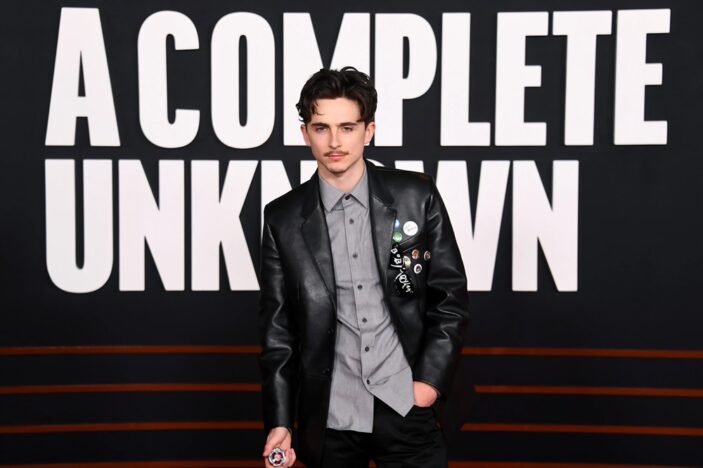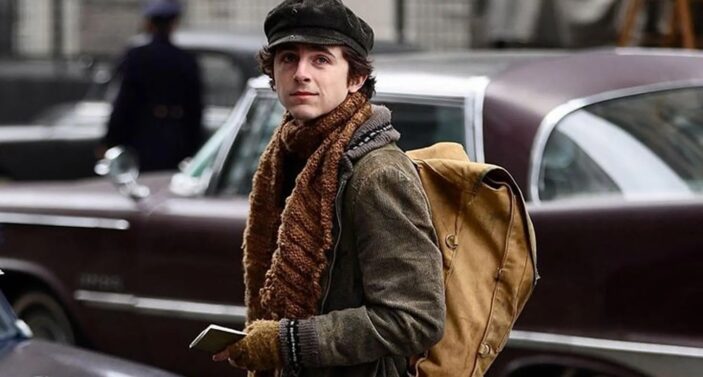
In the early 1960s, 19-year-old Bob Dylan arrives in New York with his guitar and revolutionary talent, destined to change the course of American music. Forming his most intimate relationships during his rise to fame, he grows restless with the folk movement, making a controversial choice that reverberates worldwide.
Bringing Dylan’s specific story to the big screen for all to uncover his unique enigma of a personality, James Mangold has crafted A Complete Unknown, with Timothée Chalamet delivering career-finest work as the mysterious musician.
As the film arrives in Australian theatres this week, Peter Gray spoke with the lead creatives of the film, including Chalamet, who touched on embodying someone as abstract as Dylan, the unexpected extended preparation he utilised, and what it meant to hear from the man himself regarding his performance.
How important was it to you for A Complete Unknown to not try and paint one definitive portrait of Bob Dylan?
This is a movie firmly about an artist evolving. This is an interpretation. This is not a definitive act. And I think James Mangold, our director, always had a very solid eye on that. This is a man who is alive and well, who knows the history of how this went down. And a lot of the footage, not particularly from 1961 and 1963, but definitely ’64 onwards, is available online, and it’s wonderful. It was very helpful to me in my interpretation of the character and of this period. Ultimately, this is an interpretation. It’s why Elle Fanning’s character is Sylvie Russo as opposed to Suze Rotolo. This is more of a fable, and nonetheless it is, of course, also a Bob Dylan biopic.
As an actor, where do you start such a gigantic journey as this? You had a very abstract view of who Dylan was prior…
The long and short of it is I did everything, everywhere, all at once. No pun intended. The great thing about playing an artist as elusive as Bob Dylan is there’s a finite amount of material that exists, particularly in the 1960s. What’s available is limited to a couple of radio interviews, a lot of music demos, and very little footage. My way in was studying what exists of him. Visually? D. A. Pennebaker’s Don’t Look Back and Martin Scorsese’s No Direction Home. But also the radio interviews from the time that were available, the biographies that are available, and Dylan’s own writing and the chronicles that trace his footsteps through Minnesota and Wisconsin, Chicago, New York, and, most crucially, connecting with the music, because the music is beautiful and all encompassing.
I had five and a half years to work on this, so the process was endless. In many ways, I feel like it’s not over. The part of my life where I play Bob Dylan is perhaps over, but the part of my life where I discover him and his artistry, I wouldn’t even say I’m halfway through, because there’s so much great material out there. There’s stuff that I’m still discovering.

As you mentioned the preparation for this role has spanned five and a half years. Was it difficult for you to maintain his mannerisms for so many years? And how do you feel now that people will finally see the outcome on the big screen?
It feels like a relief that people are finally seeing this. It feels like I got something off my plate, because at some point, you know, when COVID hit, but also the actor’s strike, I got suspicious of the universe and the mysterious ways the universe works. Maybe this project was simply something that was meant to be prepared and never put out. But we finally got the chance to do it, and now it’s coming out into the world. It’s a relief and an honour. It’s an honour to be the humble bridge to this period and this incredible artist, and this artist who impacted generations.
As Paul Atreides in Dune and as Bob Dylan, you’ve spent time portraying young men discovering the reality of what it means to come into fame or power. Is that a journey you can connect with? And what fascinates you about unpacking it on screen?
I think the most fascinating thing about the world of Dune and this period of Bob Dylan that we explore in this film from 1961 to ’65, (is that) we’re both born of the open mindedness of culture in America in the 1960s. Dune was written in the middle of the 60s in a similar time in American history where people were groundbreaking with their creativity. As far as relating to these roles, I don’t really have an interesting perspective beyond the ways that are apparent to you or to me.
On Dylan himself, I have to imagine you’ve been curious about what he’s going to make of this performance?
I didn’t know if he was ever going to say anything, because true to the reclusive artist that Bob is, I don’t know if he’ll ever see the movie, truthfully. I’ve heard from people that maybe he hasn’t even seen No Direction Home or I’m Not There, so who knows if it’s true. But seeing that tweet (from Dylan) was a hugely affirming (moment). When you’re a young artist, I don’t care how successful you are, to get a pat on the back from a legend, especially a legend of few words like Bob Dylan, was a dream come true. Literally. It was beyond my wildest dreams. It was an enormous pat on the back, and a moment for me in my life and career to go, “Okay, I’m doing the right thing.”
A Complete Unknown is screening in Australian theatres from January 23rd, 2025.
